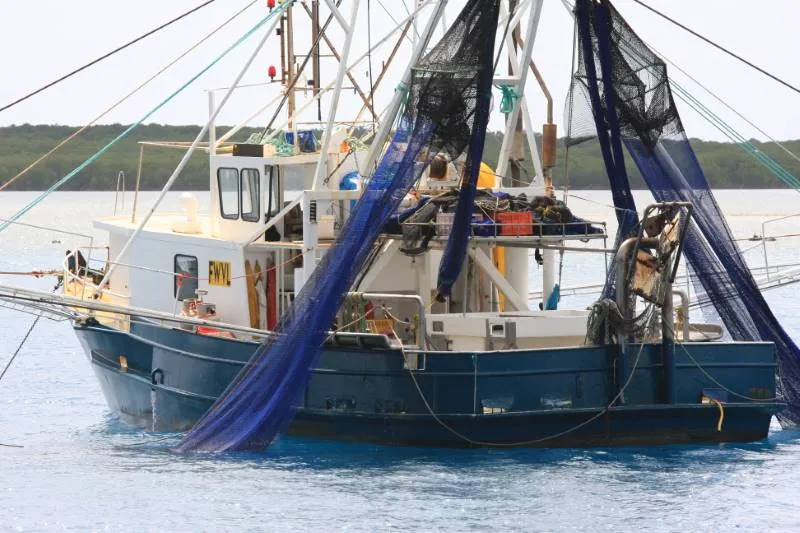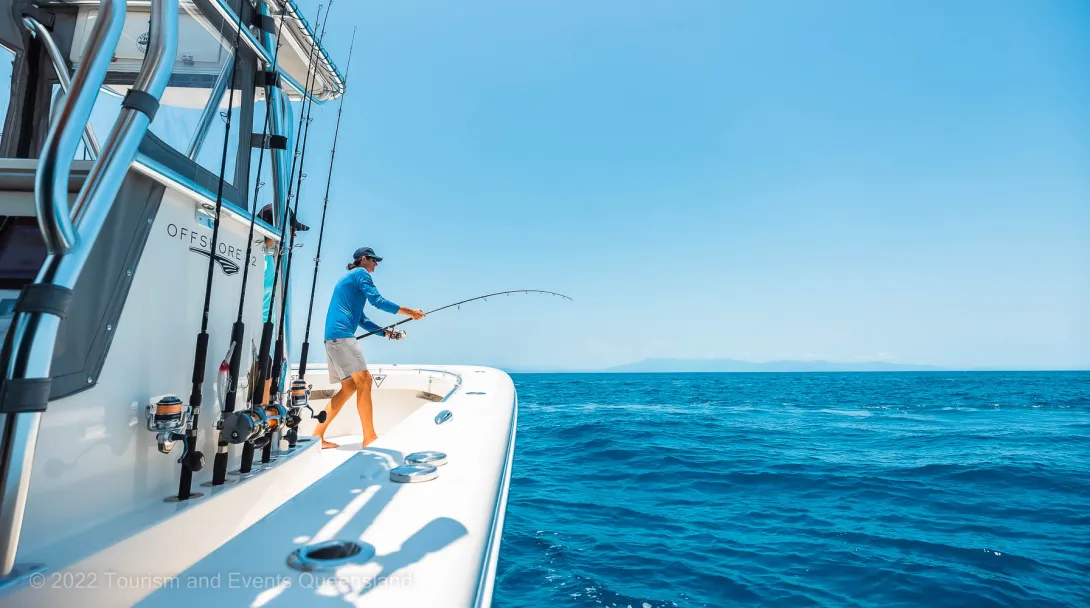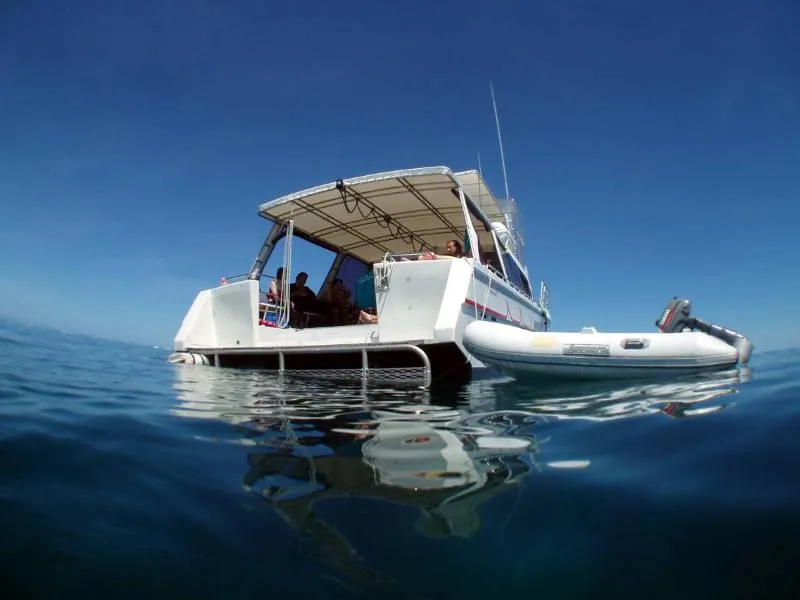- On this page:
- Types of commercial fishing
- Trawl fisheries
- Line fisheries
- Net fisheries
- Trap fisheries
- Dive-based harvest fisheries
- Managing commercial fishing
Fishing is an important activity in the Great Barrier Reef Marine Park and provides valuable social, economic and cultural benefits.
Commercial fishing is the largest extractive activity in the Marine Park with an average annual value of approximately $200 million. Viable commercial and charter fishing industries depend on a healthy ecosystem.
The Reef Authority’s Position Statement on Sustainable Fisheries reaffirms our commitment to sustainable fishing and healthy fish populations and sets the standard for what needs to be done to achieve this.
We work collaboratively with others, including the Queensland Department of Agriculture and Fisheries (who are responsible for day-to-day fisheries management), the Australian Government Department of Climate Change, Engergy, the Environment and Water, and commercial and recreational fishers, to continuously improve fishing gear and methods.
Managing commercial fishing
The Queensland Government manages commercial fishing in the Great Barrier Reef Marine Park.
- Management arrangements for commercial fisheries include:
- Limits on the number of fishing licences
- Spatial and seasonal closures
- Restrictions on fishing vessel size
- Restrictions on the length, mesh size and number of nets used
- Limits on the number of hooks used
- Limits on the number of traps such as crab pots and dillies used
- Limits on fishing effort or total allowable catch
- Size limits and restrictions on the species that may be retained.
Types of commercial fishing
There are five main types of commercial fishing activities in the Marine Park.
In addition to the zoning information provided below, commercial fishers should also familiarise themselves with the Special Management Area requirements.
Trawl fisheries
The trawl fisheries are Queensland's largest commercial fishery. Trawlers fish in the Marine Park primarily using otter trawl nets which sweep the seabed in inter-reefal areas and between coral reefs and the mainland coast to catch prawns, scallops, bugs, squid and other marine life.
Zoning restricts trawling to the General Use (Light Blue) Zone in the Great Barrier Reef Marine Park. Zoning incorporates Queensland Government trawl closures in the Habitat Protection (Dark Blue) Zone.

Line fisheries
Line fisheries include the tropical coral reef finfish fishery (also called the reef line fishery), the rocky reef finfish fishery and trolling. These fisheries use hook and line to catch fish such as coral trout, emperors, tropical snappers and mackerels.
- In relation to line fishing and trolling:
- Line fishing is allowed in the General Use (Light Blue) Zone and the Habitat Protection (Dark Blue) Zone
- Limited line fishing is allowed in the Conservation Park (Yellow) Zone
- No more than one dory is to be detached from its primary commercial fishing vessel in the Conservation Park (Yellow) Zone and the Buffer (Olive Green) Zone
- No dory is to be detached from its primary commercial fishing vessel in a Marine National Park (Green) Zone
- Trolling is allowed in the General Use (Light Blue), Habitat Protection (Dark Blue) and Conservation Park (Yellow) Zone
- Trolling for pelagic species is allowed in the Buffer (Olive Green) Zone.

Net fisheries
Netting by commercial fishers occurs in coastal waters and some offshore waters. The main species targeted are barramundi, king and blue salmon, shark, mullet and small mackerel species.
Netting may occur in the General Use (Light Blue) Zone and Habitat Protection (Dark Blue) Zone. Bait netting may occur in these zones and the Conservation Park (Yellow) Zone.
Commercial fishers must not take bream, flathead or whiting while operating bait nets in the Conservation Park (Yellow) Zone.
Gillnet fishing
The Australian and Queensland governments are committed to phasing out gillnet fishing in the Marine Park by mid-2027.
The fishing practice has been identified as a significant danger to multiple threatened and endangered species, including inshore dolphins, dugongs and some marine turtles.
Removing gillnets from the Marine Park will help protect these species, and the Outstanding Universal Value of the World Heritage Area.
Trap fisheries
These fisheries use apparatus such as crab pots and dillies to catch blue swimmer crabs, mud crabs and spanner crabs in inshore coastal and offshore waters. Crabbing is the only kind of trapping permitted 'as of right' in the General Use (Light Blue) Zone and Habitat Protection (Dark Blue) Zone.
Limited crabbing in the Conservation Park (Yellow) Zone restricts the number of apparatus that can be used to four per person.
Dive-based harvest fisheries
The dive-based harvest fisheries involve collecting aquarium fish, coral, tropical rock lobster, trochus and sea cucumber.
These fisheries require permits under the Great Barrier Reef Marine Park Zoning Plan 2003.

